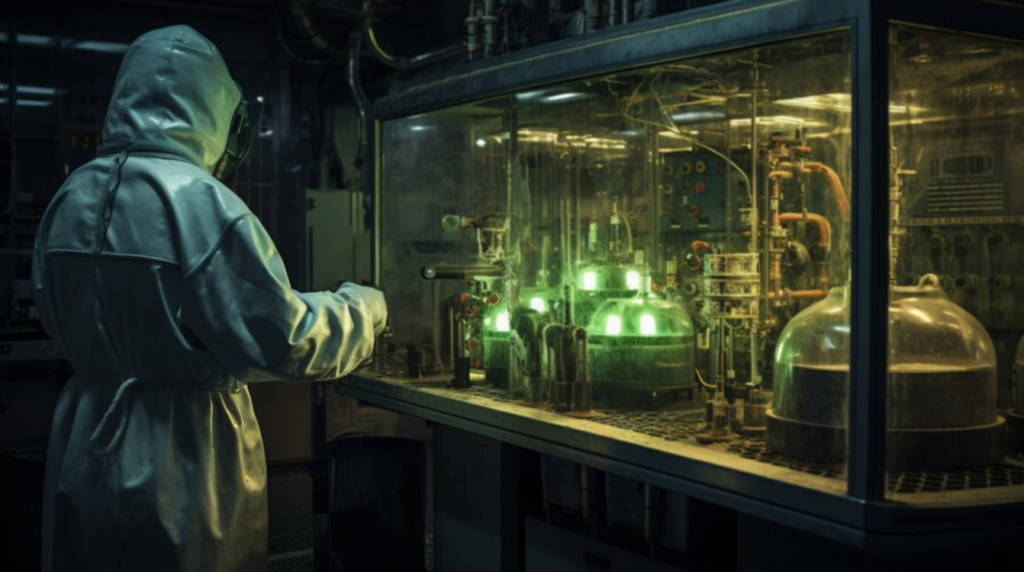In the realm of industrial progress and technological advancement, humankind has harnessed the power of various chemicals to drive innovation and economic growth.
Yet, amidst the gleaming facades of industrial marvels lies a somber truth. Some artificial substances hide in obscurity, endangering both human well-being and the fragile harmony of our surroundings.
As the global demand for chemicals surges, particularly in burgeoning economies, the specter of hazardous substances looms larger. This accentuates the urgent need for stringent chemical management practices.
In this article, we illuminate three such chemicals, once lauded for their industrial utility. Now, they are caught up in a web of peril, casting a shadow over our collective well-being.
Polychlorinated Biphenyls (PCBs)
Polychlorinated biphenyls, or PCBs, once hailed as versatile compounds with exceptional thermal and electrical properties, have left an indelible mark on our ecosystem. PCBs were used extensively in electrical equipment, hydraulic fluids, and even in pigments and dyes.
They were ubiquitous in industrial applications until their ban in many countries in the late 1970s and early 1980s, TorHoerman Law reports.
Despite regulatory efforts, PCBs persist in the environment due to their resistance to degradation.
PCBs present a multitude of health risks to humans, spanning from developmental and reproductive disorders to immune system dysfunction and cancer.
Additionally, according to the Agency for Toxic Substances and Disease Registry (ATSDR), studies on animals have shown that PCBs induce various types of tumors. These include gastrointestinal tract tumors, hepatocarcinoma, leukemia, lymphomas, and pituitary tumors.
Their ability to accumulate in the food chain exacerbates the danger. Even minute traces of PCBs in fish, dairy products, and other consumables can lead to prolonged exposure.
The revelation of these health hazards prompted legal action against the manufacturers of PCBs, with Monsanto emerging as a major player in their production.
A recent report by BBC News disclosed that Monsanto, currently owned by Bayer, was instructed to pay $857 million. This compensation was awarded to seven individuals who alleged suffering adverse health effects from chemicals leaking from light fittings at a U.S. school.
The jury determined Monsanto’s negligence and liability for supplying the PCBs used at the Sky Valley Education Center in Monroe, Washington. The verdict underscored the lack of safety warnings for the chemicals.
The plaintiffs reported a range of health issues, including neurological and endocrine system disorders, stemming from their exposure to PCBs. The compensation awarded included $73 million in compensatory damages and $112 million in punitive damages for each of the seven plaintiffs.
These legal proceedings, part of the PCB lawsuit, highlight the chemicals’ harmful potential. They emphasize the responsibility of manufacturers to prioritize public health and safety.
Bisphenol A (BPA)
Bisphenol A, or BPA, has been widely used in polycarbonate plastics and epoxy resins for years. WebMD reports its presence in various products, including medical devices and food containers. Over 90% of people have BPA in their bodies, mostly from food stored in BPA-containing containers. It can also be absorbed by air, dust, and water.
Despite its widespread use, concerns about BPA’s potential health effects have prompted regulatory action and a shift towards BPA-free alternatives.
Medical News Today highlights that BPA functions as an endocrine disruptor, as acknowledged by the Environmental Protection Agency (EPA). According to the EPA, BPA can mimic natural hormones in the body and interfere with their production, response, or action. For instance, it can mimic estrogen and other hormones in humans.
Additionally, even minute quantities of these substances can have significant developmental and biological impacts due to the delicate balance of hormones.
While efforts to reduce BPA exposure have gained momentum, its pervasive use underscores the challenges of balancing industrial innovation with public health protection.
Per- and Polyfluoroalkyl Substances (PFAS)
Per- and polyfluoroalkyl substances, or PFAS, represent a family of synthetic chemicals prized for their water and oil-repellent properties, heat resistance, and durability. PFAS are utilized in numerous industrial and consumer applications. They have become pervasive environmental contaminants, earning the nickname “forever chemicals” for their persistence in both the environment and the human body.
Studies have linked PFAS exposure to a litany of health concerns, including immune system suppression, thyroid disorders, reproductive and developmental abnormalities, and certain cancers.
The widespread contamination of drinking water supplies and agricultural lands by PFAS has sparked urgent calls for regulatory action. Remediation efforts are underway to mitigate the risks posed by these persistent pollutants.
Yet, the sheer ubiquity and complexity of PFAS contamination underscore the formidable challenges in addressing this multifaceted environmental and public health crisis.
FAQs
What are PCBs?
PCBs, or polychlorinated biphenyls, are synthetic organic chemicals commonly used in industrial applications, including electrical equipment, hydraulic fluids, and insulation materials.
What is the PCB lawsuit?
The PCB lawsuit involves legal actions against PCB manufacturers, who produce these synthetic chemicals with known health and environmental hazards. These lawsuits typically involve individuals or communities seeking compensation for damages resulting from exposure to PCBs.
What is BPA?
BPA, or Bisphenol A, is a synthetic chemical used in the production of polycarbonate plastics and epoxy resins. It has been widely used in various consumer products, including food and beverage containers, medical devices, and thermal paper receipts.
In conclusion, the industrial revolution has brought remarkable technological progress. However, it has also left us with a legacy of hazardous chemicals that threaten both our health and the environment’s integrity.
As we face the challenge of balancing industrial progress and human well-being, we must learn from the past. We should strive for a future where innovation prioritizes the health and welfare of current and future generations.
